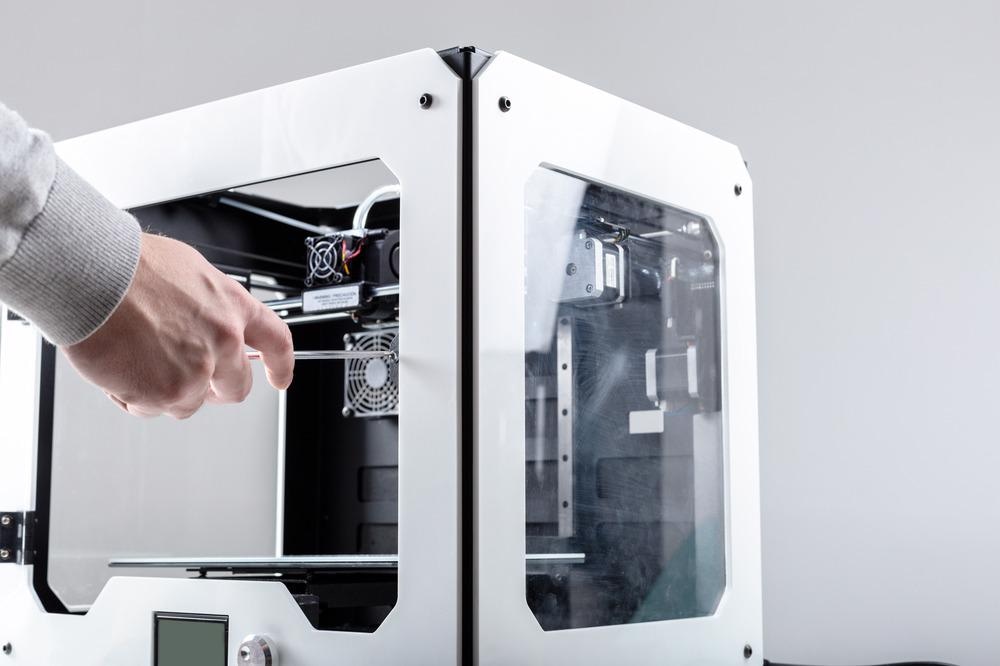 By Surbhi JainReviewed by Susha Cheriyedath, M.Sc.Jun 7 2022
By Surbhi JainReviewed by Susha Cheriyedath, M.Sc.Jun 7 2022In an article recently published in the journal Biomaterials, researchers discussed the utility of a 3D manufactured MCT oleogel as the co-delivery carrier for resveratrol and curcumin.

Study: 3D printed MCT oleogel as a co-delivery carrier for curcumin and resveratrol. Image Credit: FabrikaSimf/Shutterstock.com
Background
Numerous studies concentrating on designing nutraceutical carriers for enhancing bioavailability and health benefits have been published in the literature during the last decade. Meanwhile, due to their various synergistic effects displayed compared to the individual compounds, the combination of two or more nutraceuticals or nutraceuticals built out of two or more bioactive compounds have more potential than may be recognized as "next-generation multipurpose medicine."
Curcumin plus resveratrol is a well-studied and proven combo among several combinations. Nutraceuticals' poor water solubility, hydrophobicity, and sensitivity to processing conditions make them difficult to include in food formulations in the food and pharmaceutical industries. To overcome this difficulty, several approaches are being actively investigated. Edible oleogels and structured oil have been proposed as a potential carrier system for lipophilic active chemicals because of their ability to manage lipid digestion and distribution.
In the field of tissue engineering, gelatin and gellan gum as hydrogelators with the potential to create compact 3D networks have been extensively explored to develop cell supports or replacers for cell regeneration. Despite the fact that gelatin-gellan hydrogels have been shown to have good carrier capabilities, their ability to transport a lipophilic chemical through an oleogel matrix has yet to be tested.
About the Study
In this study, the authors developed an emulsion templated medium-chain triglycerides (MCT) oleogel as a co-delivery carrier for synergistic curcumin, nutraceuticals, and resveratrol, as well as a 3D printer for individualized nutrition. Gelatin and gellan gum were used to create a stable emulsion because their protein-polysaccharide interaction aided in the structuring of the oil phase.
In order to develop a stable 30% O/W emulsion for 3D printing, 1.5% (w/v) gellan gum and 10% (w/v) water gelatin were chosen. The emulsion stabilized with 1.5% gellan gum through GG1.5 was optimized for 3D printing with a 1.2 mm nozzle diameter, 800 mm/min printing speed, 180 rpm motor speed, and 1.25 kgf/cm2 pressure under printing parameters of 1.2 mm nozzle diameter, 800 mm/min printing speed, and 1.25 kgf/cm2 pressure.
The team examined the effect of gelatin and altering the amount of gellan gum added to the MCT oleogel matrix as a carrier for co-delivery of curcumin and resveratrol for better bioavailability and health benefits. The desired printability of oleogel was attained when potato starch and whey protein system were added to the beeswax-based oleogel. Similarly, a mixture of monoglycerides gelated oleogels and active phytosterols were printed as a nutraceutical dose. The bioaccessibility and permeability of the freeze-dried oleogel were assessed utilizing in-vitro simulated digestion research and the ex vivo everted gut sac technique.
The researchers used MCT oil to create an emulsion templated oleogel that was built using the protein-polysaccharide interaction between gellan gum and gelatin, which carried resveratrol and lipophilic curcumin for a synergistic effect. The influence of increasing the concentration of gellan gum from 1% to 1.75% on 3D printing was investigated.
Observations
Increased gellan gum had a good effect on emulsion stabilization, and it was a critical parameter during 3D printing. The bioactives were preserved under oral and stomach circumstances, which allowed intestine tailored distribution, according to the in-vitro digesting behavior of the oleogel. When compared to control, the total bioaccessible fraction of curcumin and resveratrol increased 1.13-fold and 1.2-fold, respectively. Gelators played a crucial role in lipase activity. Curcumin and resveratrol demonstrated increased penetration of 1.83 and 1.13 times, respectively, in the ex-vivo everted gut sac study.
Gellan gum boosted the stability of emulsion by allowing the tight packing of the lipid phase, according to the results of microscopic examination and dynamic viscosity measurements. The higher modulus values were due to the thickening effect caused by the gum addition. The proposed printing circumstances resulted in optimal extrusion, which allowed for the creation of 3D printed structures in customizable shapes. The shape and structure of the freeze-dried oleogel were also preserved. It was discovered in a lipolysis investigation that oleogel had a slower release profile of FFA than control, which showed that the gelators were important in lipolysis.
In an in-vitro digestion investigation, the oleogel demonstrated significantly better bioaccessibility for curcumin and resveratrol, which contributed to a 1.19-fold and 1.13-fold increase in a total bioaccessible fraction over the control MCT oil. Ex vivo everted gut sac permeability investigation demonstrated that oleogel significantly increased curcumin and resveratrol penetration compared to the control. 3D printing allowed additive emulsion stacking, which enabled additive encapsulation and protection of bioactive substances.
Conclusions
In conclusion, this study elucidated the 3D printing of the oleogel using an emulsion templated technique as a nutraceutical carrier for co-delivering resveratrol and curcumin. It was discovered that an emulsion could be 3D printed and dried to create oleogels as nutraceutical carriers with customizable bioactives infusion and release.
They mentioned that this research adds to the understanding of 3D printing of emulsion templated oleogel as nutraceutical carriers. They also stated that with multiple studies demonstrating the efficacy of 3D printed medicinal dosage forms, greater study into 3D printing of nutraceuticals, particularly controlled distribution by additive layering, is encouraged.
More from AZoM: How are PAT Techniques Used for Real-Time Particle Analysis?
Disclaimer: The views expressed here are those of the author expressed in their private capacity and do not necessarily represent the views of AZoM.com Limited T/A AZoNetwork the owner and operator of this website. This disclaimer forms part of the Terms and conditions of use of this website.
Source:
Kavimughil, M., Leena, M. M., Moses, J. A., et al. 3D printed MCT oleogel as a co-delivery carrier for curcumin and resveratrol. Biomaterials 121616 (2022). https://www.sciencedirect.com/science/article/abs/pii/S0142961222002563